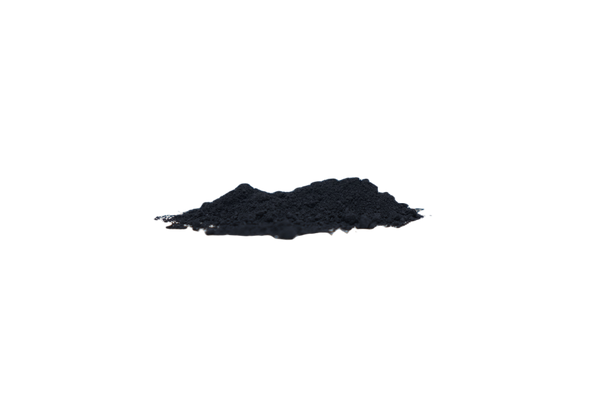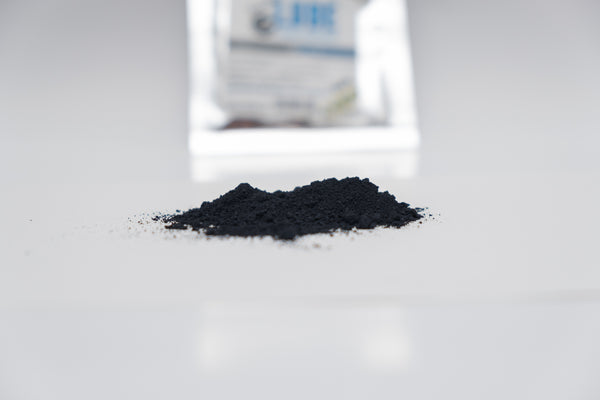Flake Graphite MG3096
Bulk packaging 20kg
Graphite powder 96% carbon content, grain size up to 5μm
Pure, highly selected crystalline graphite for industrial purposes, miscible with many chemicals including lubricants (e.g. graphite grease)
Polish Product Evil Lubricants
Flake graphite is a variety of natural graphite with a highly ordered structure.
crystalline. It is the result of metamorphism of carbon-rich organic substances, similar to hard coal. Flake graphite has a characteristic metallic luster, for which reason it is also called silver or crystalline graphite.
Features and Benefits
- good thermal and electrical conductivity,
- low coefficient of thermal expansion,
- high chemical and thermal resistance,
- excellent lubricating properties.
- high anisotropy
Applications Applications
- for the production of lubricants,
- for anti-corrosion and reflective paints and coatings,
- for and impregnation of sealing and insulating materials,
- for forging coatings and separators,
- for battery cores, electrodes and electrical accessories,
- for composites and plastics, cemented carbides, cermets, explosives, in laboratory technology.
- in metal casting,
- for fireproof materials,
- for antistatic coatings,
- for friction and brake linings
- for anti-inflammatory protectors,
- for polymer materials, elastomers, foams, polystyrene, (granulated graphite EG 096 with powder consistency)
Metal casting (Flag graphite FG 192, MG 192 and in the form of dispersion MG-4 is used to create coatings as a separator of casting patterns and molding masses, where it also acts as a refractory coating protecting castings against the formation of external defects such as burns, penetrations and scabs)
Production of black refractory materials, crucibles, retorts, elements of furnace linings FG 192, FG 395 (The addition of graphite plasticizes the mass and facilitates forming, moreover, it increases the quality of finished products, increases their fire resistance, chemical resistance, significantly reduces friction and the coefficient of thermal expansion)
Special greases (fine-flake graphite MG 394 and micropowders MG 1596 and 3096 are used to produce greases in the form of pastes. Graphite powders can be an additive to lithium, calcium greases or bentonite masses, increasing their durability at high temperatures)
Antistatic coatings (graphite is used as a charge passivator in antistatic coatings. It is a proven component in the production of explosion-proof curtains, linings and mining foils, it is an additive to floors, conductive and antistatic coatings. Graphite type MG 394 is most often used for the production of these materials)
Friction and brake linings (graphite types used: MG 192 and MG 394. The addition of graphite to the friction material increases its thermal conductivity, resistance to abrasion and rapid temperature changes)
Anti-flammable protectors. Modified graphite EG is added as a means of increasing fire resistance to various types of insulation, materials and coatings (anti-flame or flame retardant). Graphite type EG 290 is intended as an additive to bituminous coatings, fire partition seals and fireproof coatings.
Properties of Flake Graphite MG3096
| Carbon content min. | Grain size | % fraction / expansion | Humidity max | Bulk density |
| 96% | <5 μm | 50% | 2% | ~0.4 g/cm³ |
Graphite Production
Graphite is a type of carbon with a black-gray color and metallic sheen. It is very soft (graphite hardness on the Mohs scale is 1), susceptible to abrasion and splits. It has excellent lubricating properties, is greasy to the touch and resistant to high temperatures. It has high mechanical resistance to compression and low resistance to stretching. In addition, graphite and graphite products do not dissolve in water, are characterized by low chemical activity, easy storage and disposal, and no negative impact on the environment. Thanks to these features, it has gained the name of a modern and at the same time ecological material.
Flake graphite is obtained from ores with a carbon content of up to 10%. After appropriate purification in the flotation process, the graphite reaches a level of 85%. Then a chemical refining process is carried out, thanks to which the content increases to 96%, and after thermal refining even to 99.99%.
Types of Flake Graphite
| Type | Carbon content min. | Grain size | % fraction / expansion | Humidity max | Bulk density |
| FG395 | 95% | >500μm | 80% | 2% | ~0.6 g/cm³ |
| FG192 | 92% | >500μm | 80% | 3% | ~0.5 g/cm³ |
| MG 192 | 92% | >500μm | 90% | 3% | ~0.5 g/cm³ |
| MG 394 | 94% | >45μm | 90% | 2% | ~0.4 g/cm³ |
| MG 1596 | 96% | <10μm | 50% | 2% | ~0.4 g/cm³ |
| MG3096 | 96% | <5 μm | 50% | 2% | ~0.4 g/cm³ |
| EG096 | 96% | 0 - 0.15mm | 50-90 ml/g | 2% | ~0.6 g/cm³ |
| EG290 | 90% | 0.2 - 0.6mm | 200-300 ml/g | 2% | ~0.65 g/cm³ |
| EG394 | 94% | 0.4 - 0.9mm | 300-400 ml/g | 2% | ~0.6 g/cm³ |
| MG-4 | 94% | <8μm | 0.5 | water 70% | Dispersion |
Product title
Vendor
€19,99 EUR | €24,99 EUR
Product title
Vendor
€19,99 EUR | €24,99 EUR
Product title
Vendor
€19,99 EUR | €24,99 EUR
Product title
Vendor




































